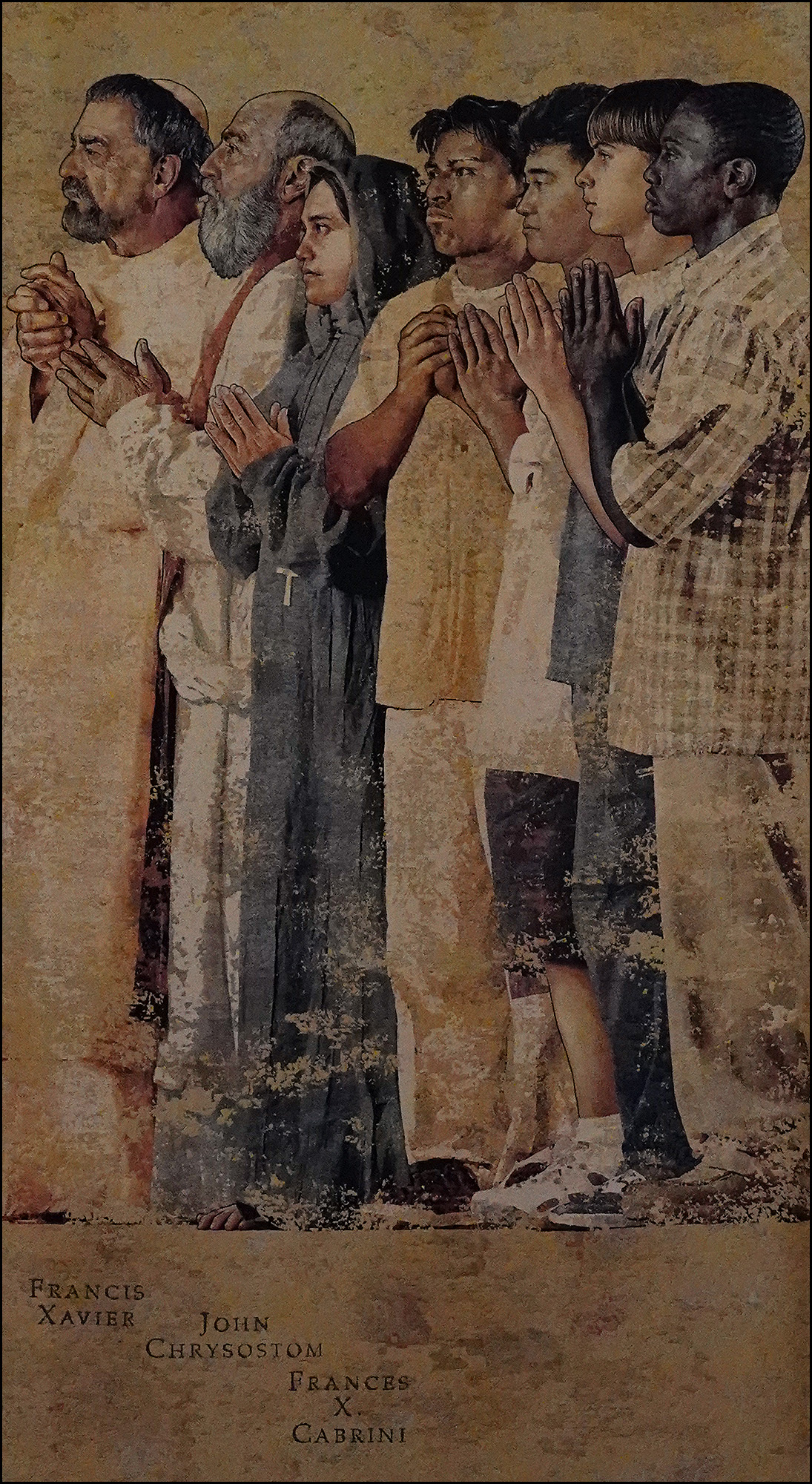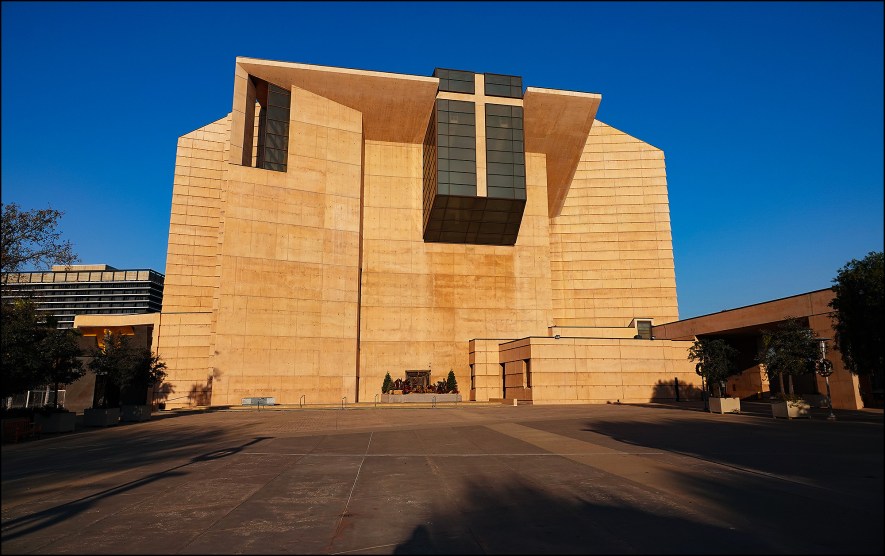
Today I have a lunchtime photo extravaganza for you. A couple of weeks ago I used one of my dex nights to head up to Los Angeles and take pictures of the LA Cathedral. I’ve driven by the cathedral many times since it opened in 2002, but I’ve never actually been there, and I figured it was past time.
The cathedral itself keeps pretty short hours, but I didn’t know if the grounds were accessible more generally. The answer, it turns out, is no, for a simple reason: the place is built like an urban fortress and the gates are shut until the cathedral itself opens. The only thing missing to keep people out is concertina wire on top of the surrounding walls. The wall along Temple St. is upwards of 20 feet high, and the Grand Ave. side, which features a bell tower, is only slightly less intimidating:
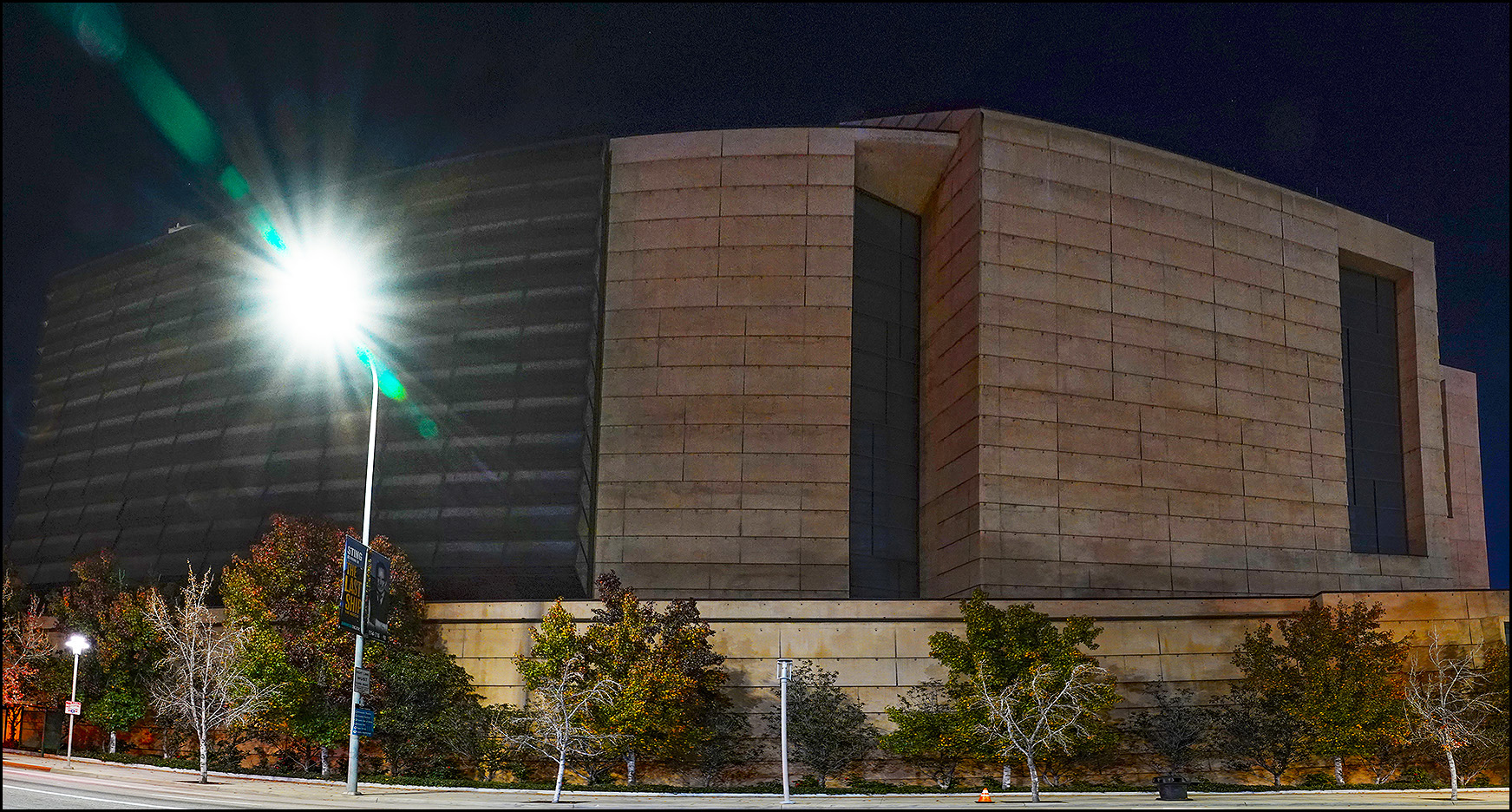
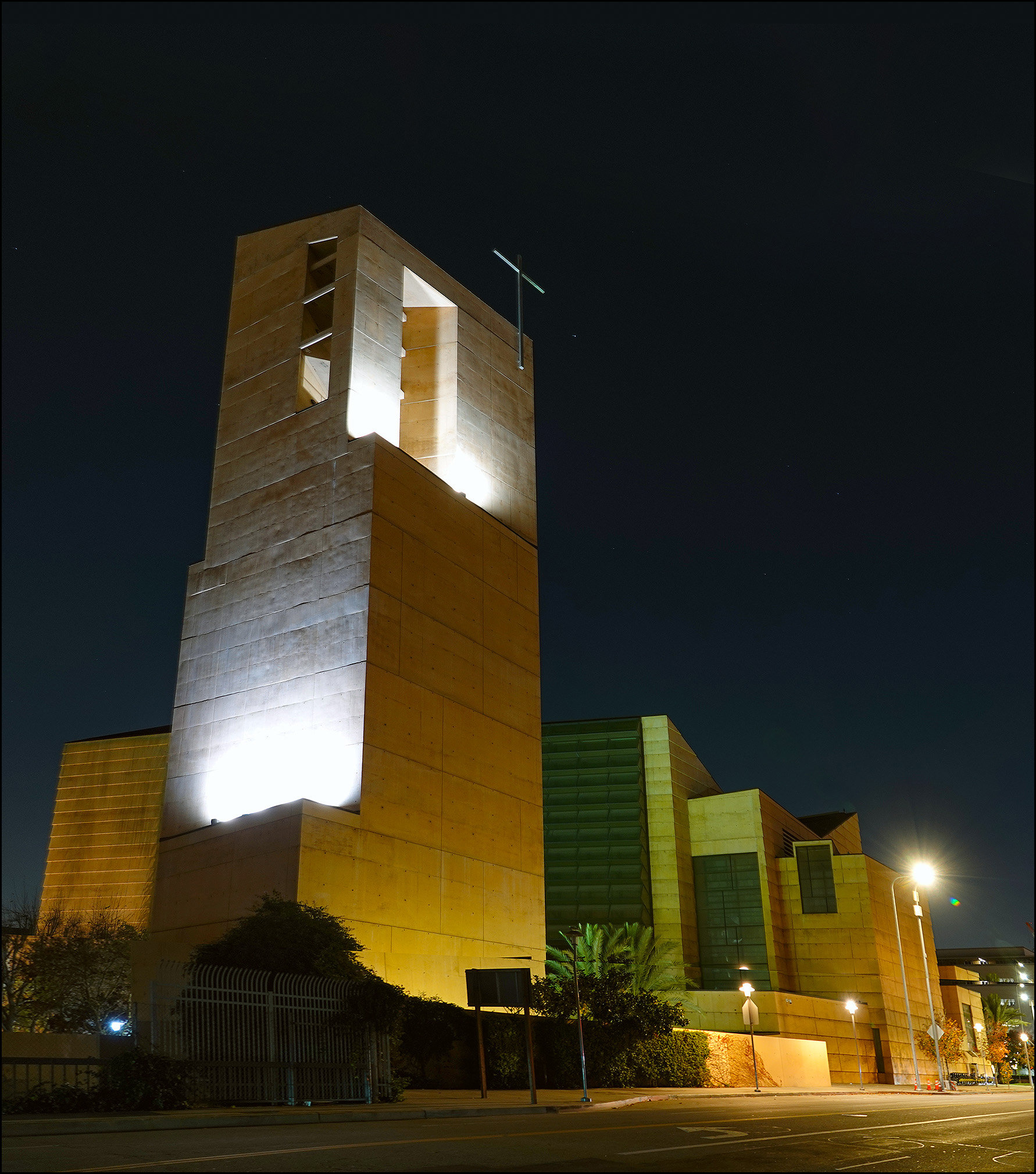
On Temple St. near Hill you’ll find the pedestrian entrance. There’s only one, and it has the look and feel of the entrance to a prison:

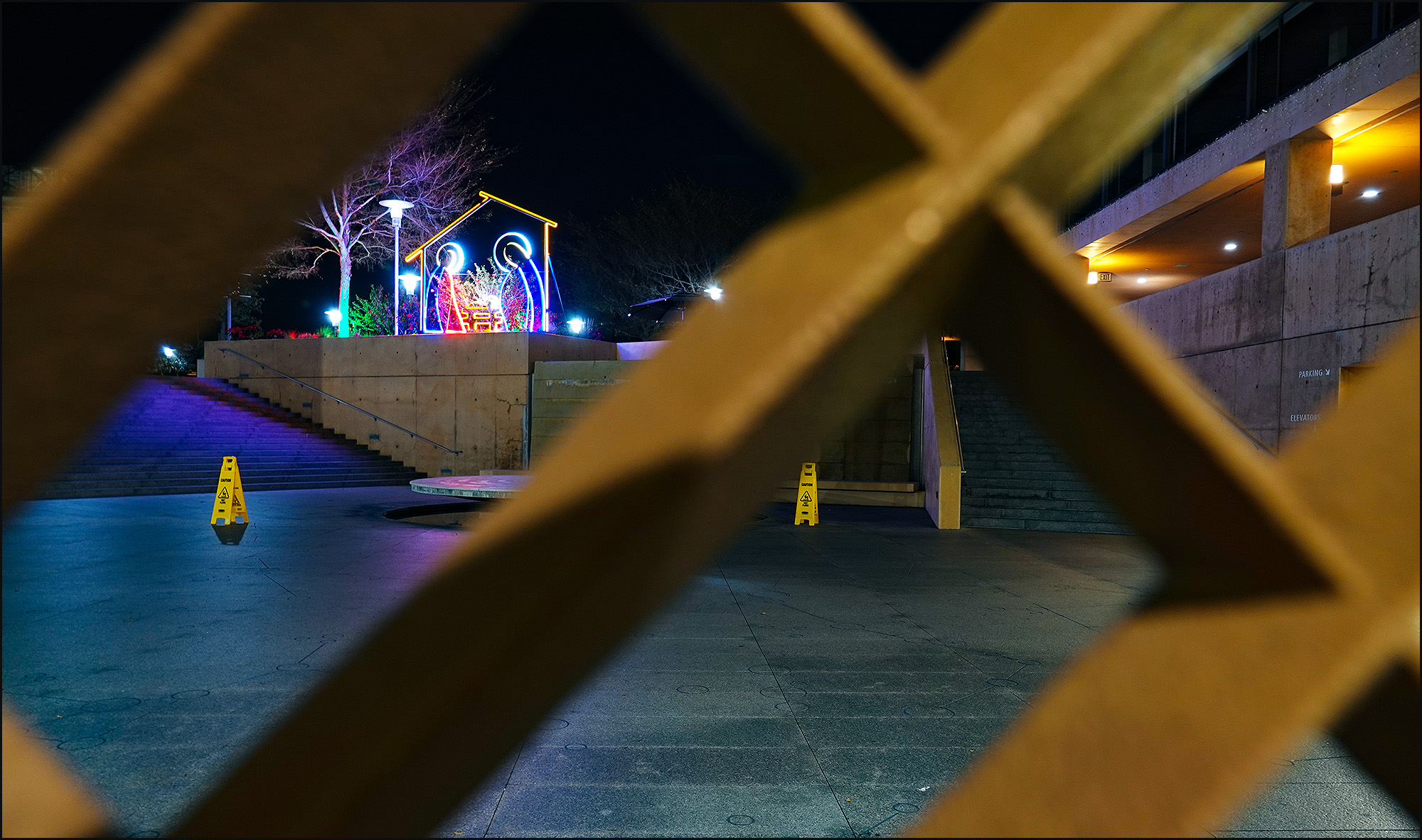
The cathedral grounds don’t open until 9 am on Saturdays, but it turns out the parking structure opens at 8 am and you can get into the grounds from there. That was lucky for me, since 8 am provides the ideal winter light for photographs and shows off the cathedral at its best:
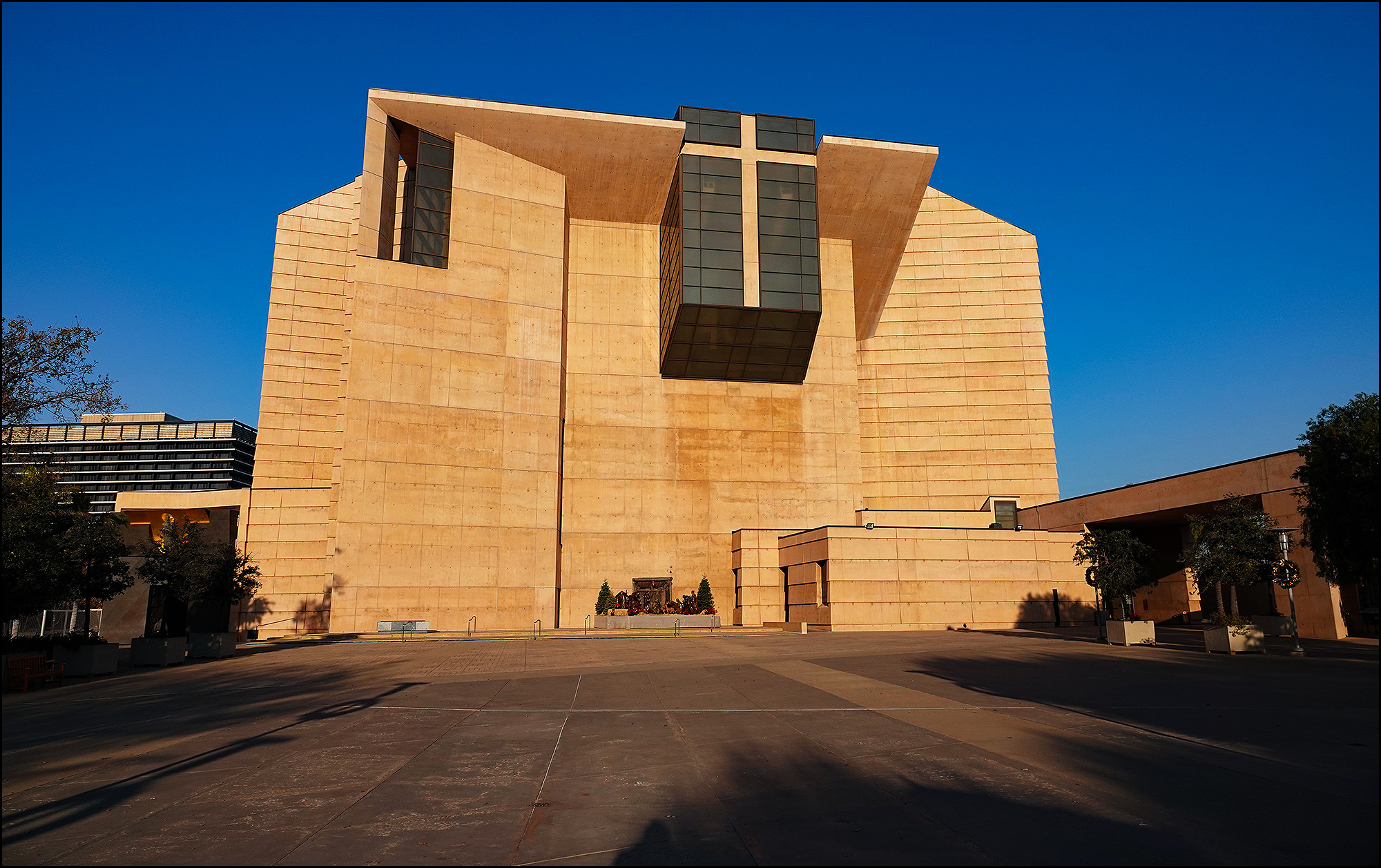
Architectural connoisseurs are apparently fond of this brutalist-meets-colonial-revival building, but I find it pretty hideous, with absolutely nothing to make it look even slightly welcoming. The front facade—which is actually the rear of the cathedral—is a towering blank wall with the doors hidden off to the sides and a vast, empty courtyard in front. I suppose the courtyard was meant to remind us of the look and feel of the public plazas that typically sit in front of European cathedrals, but it does just the opposite. European plazas are open to the public and are usually bustling with people. The LA Cathedral’s courtyard sits behind walls and is completely lifeless most of the time. The entire structure is built forbiddingly of concrete, but the sand color is warm and appropriate.
Here’s the bell tower:
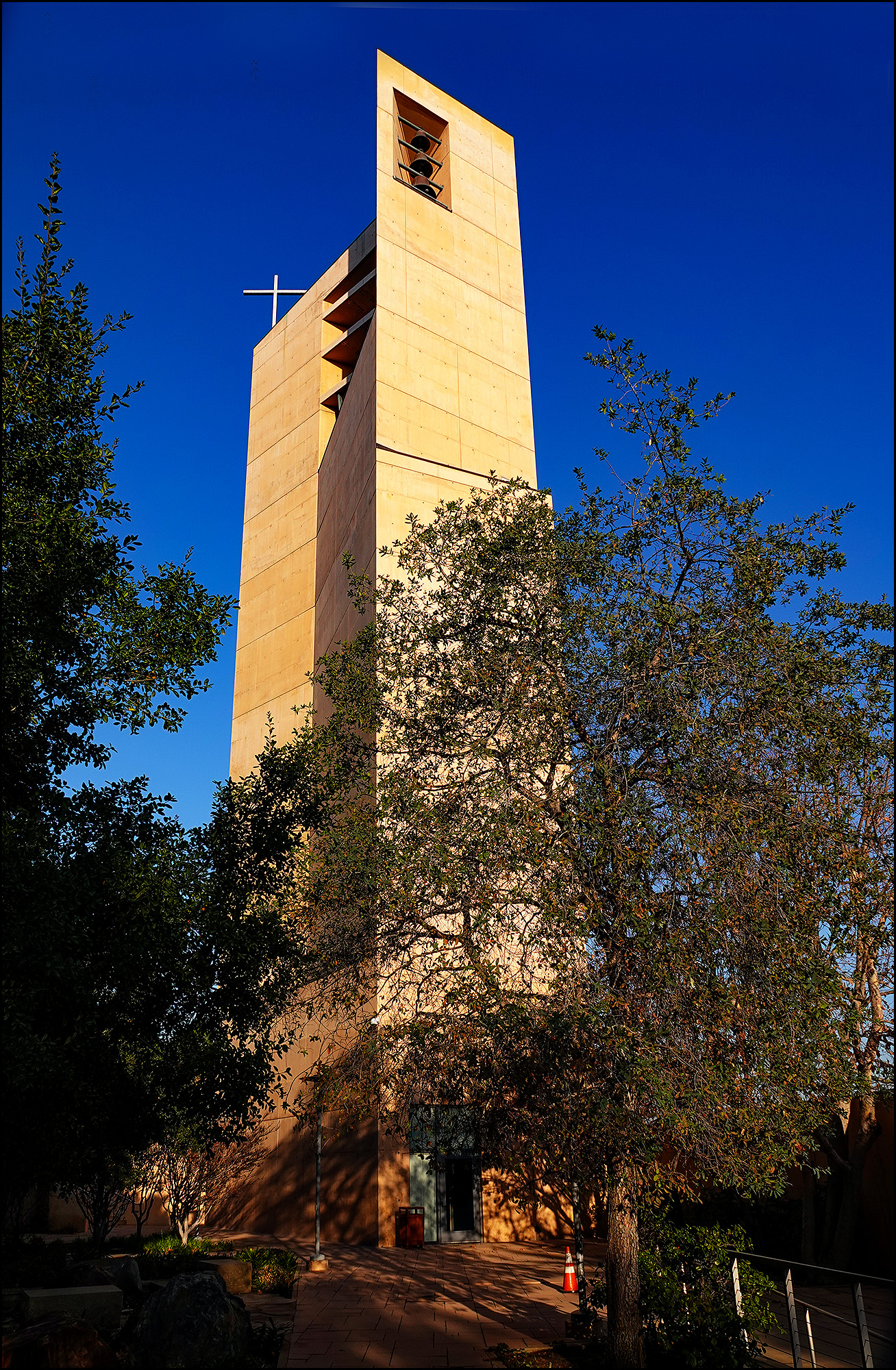
And here’s another view of the exterior of the cathedral taken an hour later after the light had softened, along with the giant robot monster threatening to tear it to pieces:
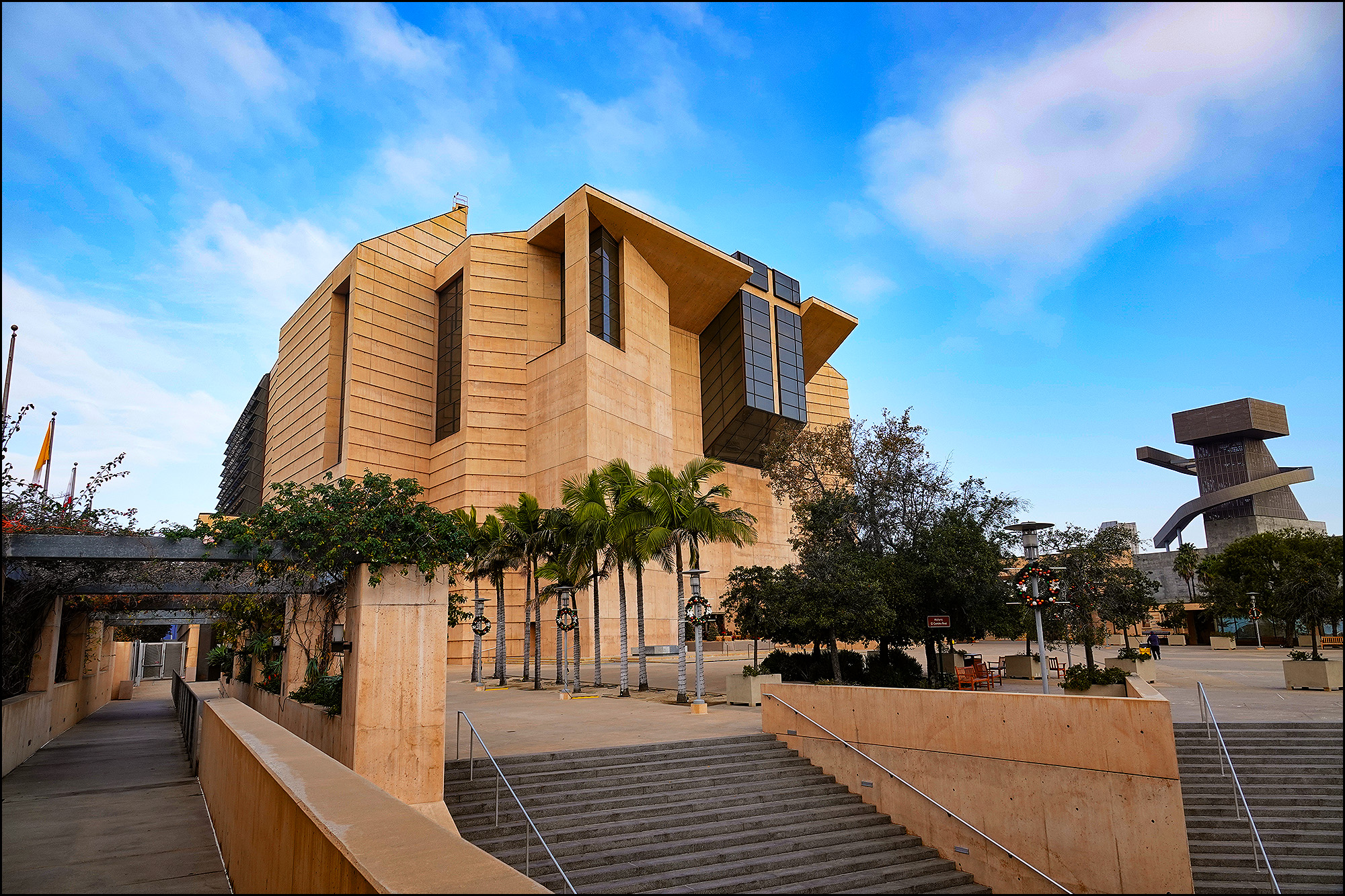
Wait. A robot monster? Yes indeed, that’s what it looks like. In reality, it’s the tower at Grand Arts High School on the other side of the Hollywood Freeway. It was originally intended to be functional, with a meeting space inside and a viewing platform on top, but that never happened. So it’s just a thing:
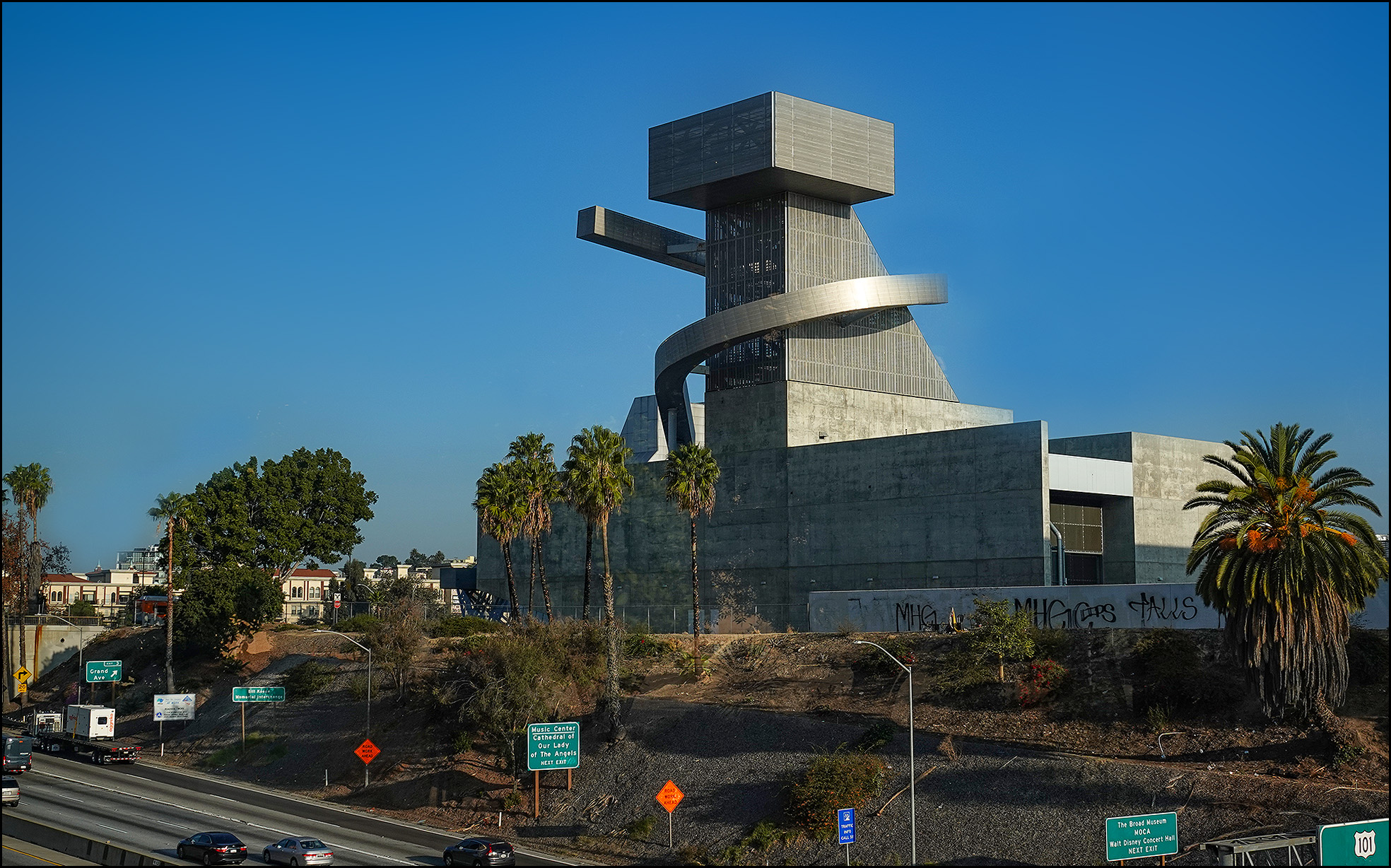
Back to the cathedral, then. The wall along Temple St. features a set of bells in a style meant to pay homage to the California missions:
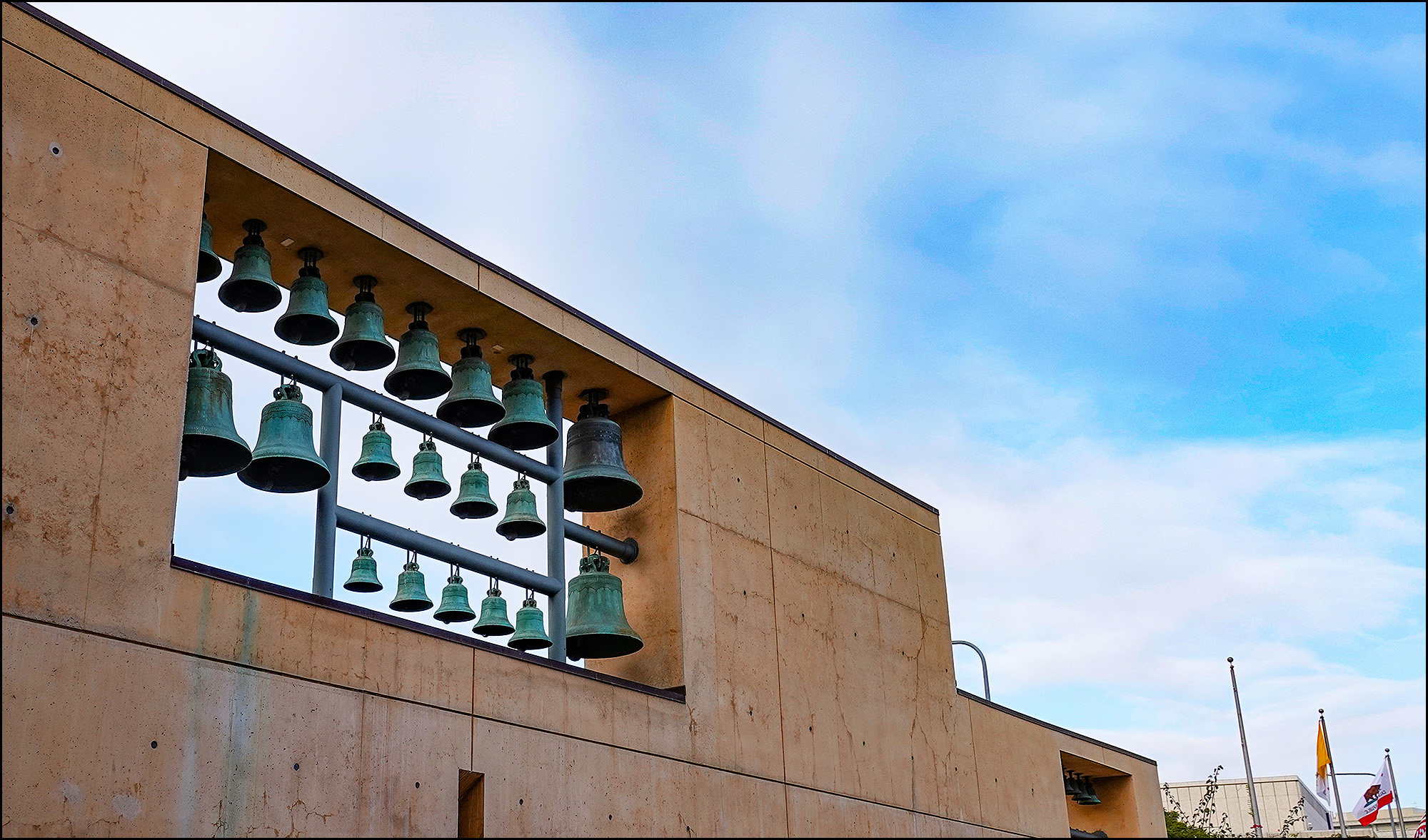
Surprisingly, the interior of the cathedral turns out to be lovely, warm, and welcoming. It was also a great opportunity to produce a panoramic view, which Photoshop did flawlessly. Here are two views, one taken from the rear of the nave (six frames stitched together) and one taken from a bit further back in the baptistry (four frames):
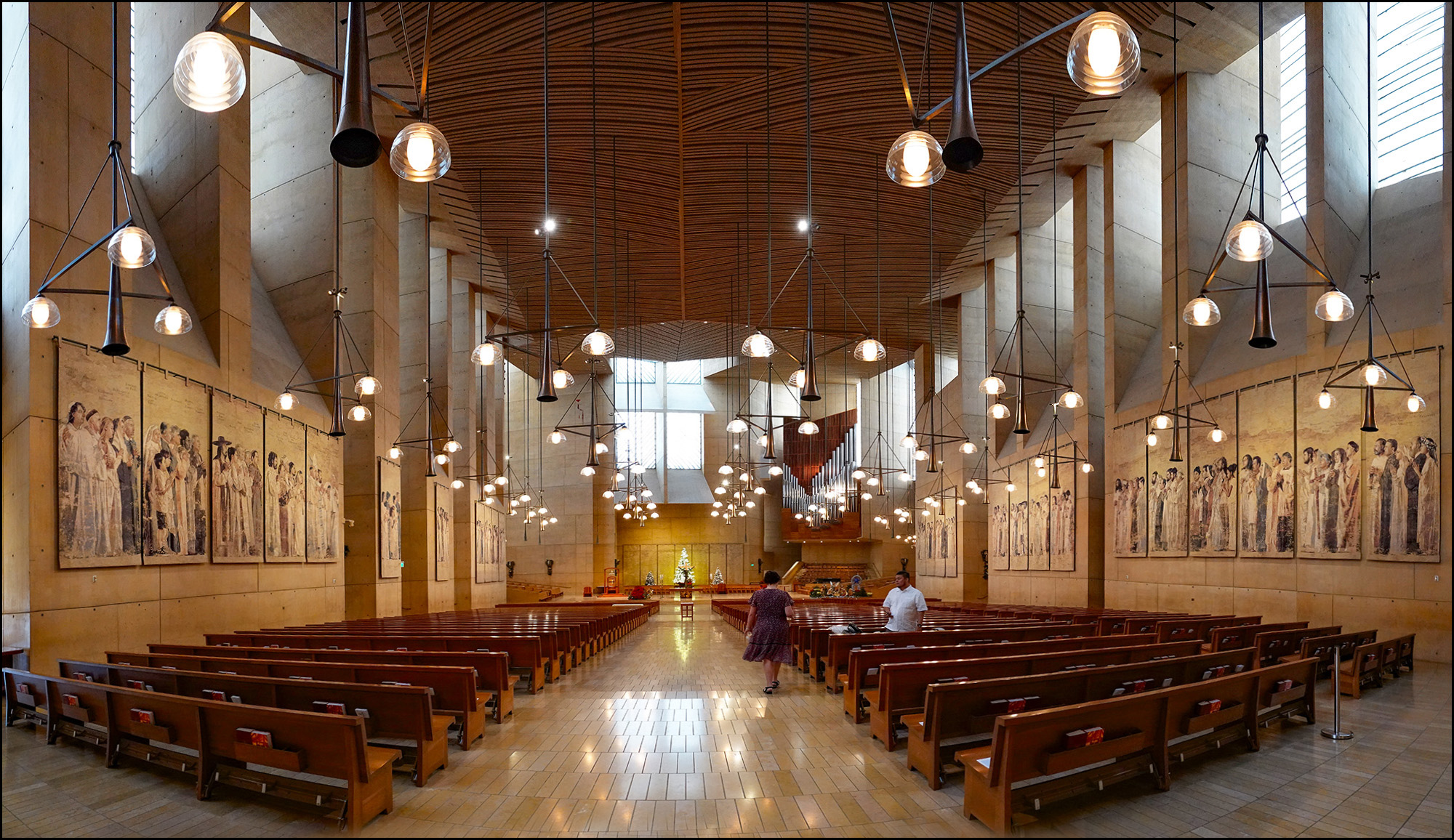

The organ has 6,019 pipes:
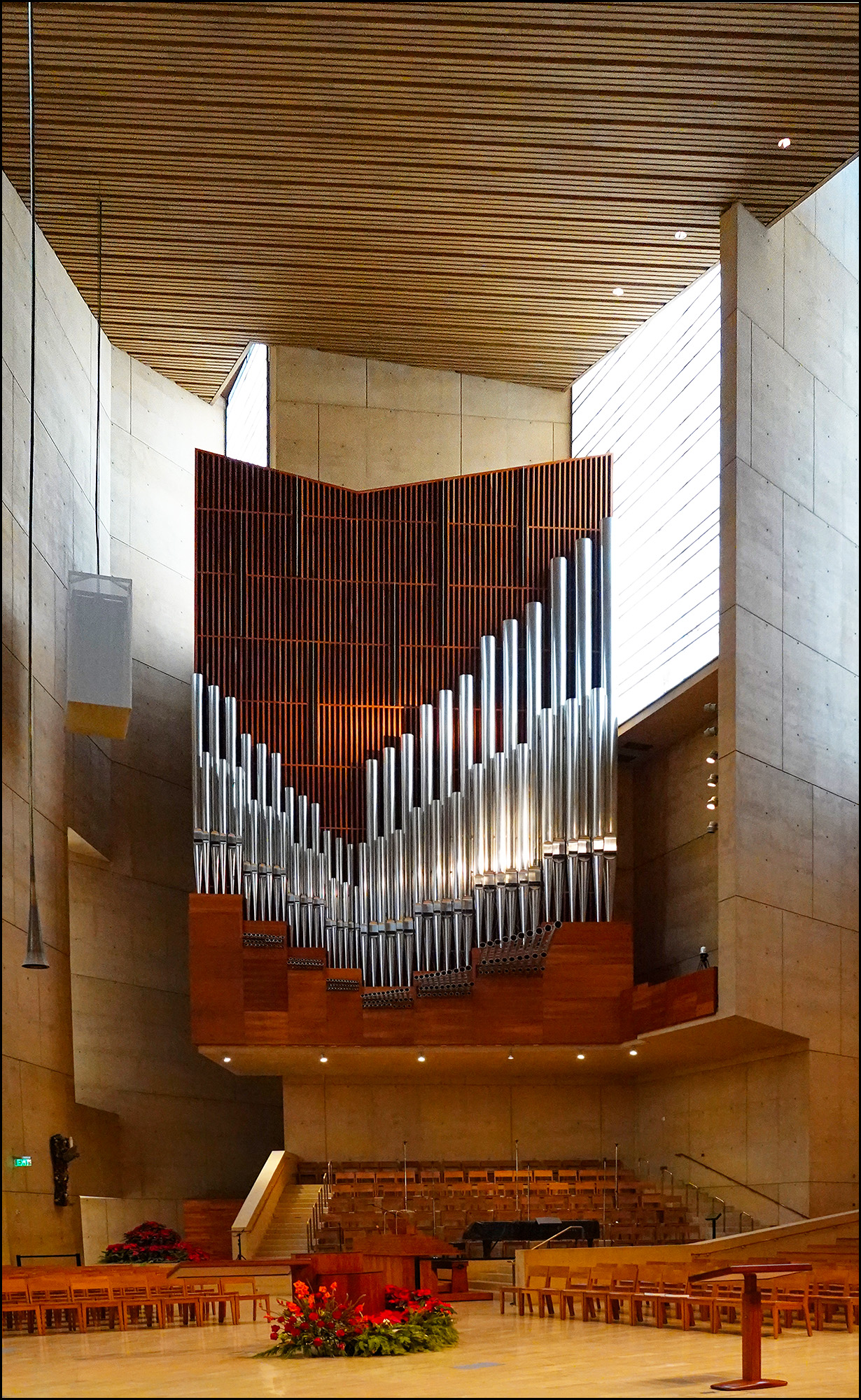
The sides of the nave are decorated with tapestries featuring images of various saints. I call this one the Tapestry of the Unknown Saints:
